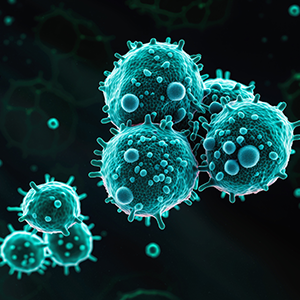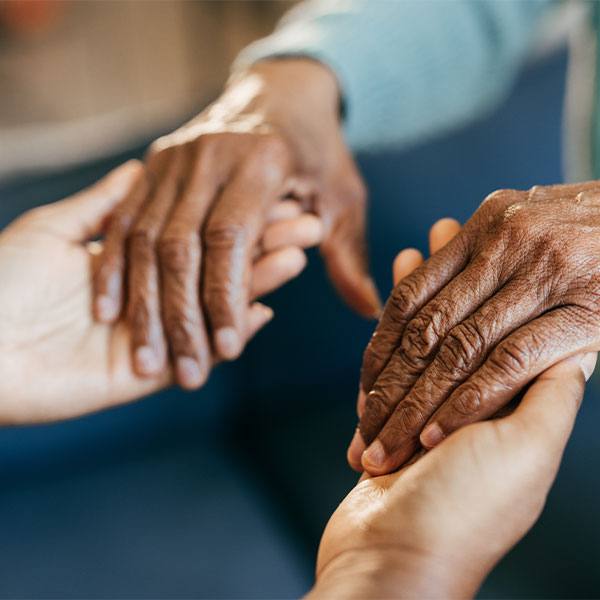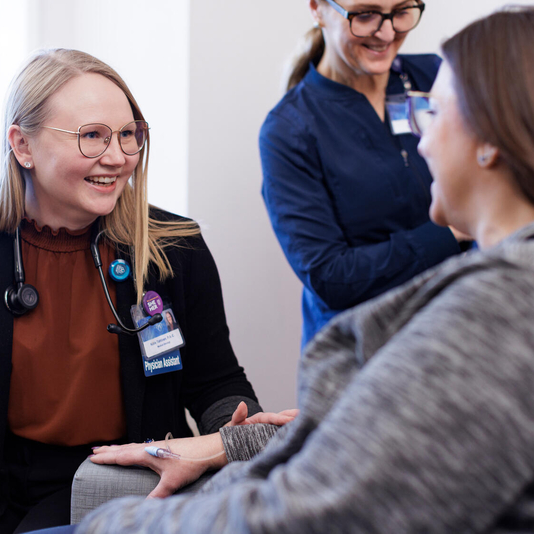-
Student researcher teaches biomedical community about blindness — and life
Charlotte Brown first discovered her passion for medicine through books. "I've always been a voracious reader. As a child, I dreamt of becoming a neurosurgeon and spent hours reading about the brain, diseases and procedures," she says. Three years ago, at the end of an undergraduate degree focused on business, a neuroscience book reignited her curiosity, and she decided to switch paths and head for a career connected to health care.
After testing the waters with a master's degree in neuroscience, the Texas native moved to Rochester to join Mayo Clinic's Post-baccalaureate Research Education Program, known as PREP, to take a variety of upper-level science courses and gain the research experience needed to succeed in a Ph.D. or M.D.-Ph.D. program.
In the lab of neurosurgeon David Daniels, M.D., Ph.D., Brown is learning experiments to study the epigenetic changes that occur in a highly aggressive form of pediatric brain cancer, known as diffuse midline glioma, that currently has no cure. At her desk, samples and chemicals are marked with braille labels. To conduct an experiment like a western blot, which indicates protein levels, she uses a plastic insert that guides the tip of her micropipette into tiny wells.
Brown has been visually impaired since birth and blind since age 14 due to a rare chromosomal abnormality called partial monosomy 13q. As a scientist-in-training, she's already at home in the lab and has even contributed to published papers. And she faces her research goals with the same approach as all the other activities she loves to do.
"I run on a full tank of stubbornness, always," she acknowledges. "If it needs to get done, I will find a way." In fact, she's doing more than helping find new treatments for disease. Her goals include dispelling misconceptions about blindness. "I don't view my blindness as a disability because the list of things I can't do is incredibly short, and everyone has a list," she says.
I'm Going to Assume You Can Do Everything
Brown was in elementary school when she realized her visual field was diminishing. She taught herself braille in middle school, and by the end of ninth grade, she had lost her remaining sight. An avid athlete, she found ways to continue the sports she loved, like running and cycling, using an echolocation device that makes clicking noises to alert her about obstacles.
When she first began the PREP program, which is part of the Mayo Clinic Graduate School of Biomedical Sciences, she immediately sought out the lab of Dr. Daniels. He specializes in treating pediatric patients with complex brain tumors and leads a research lab that includes studying tumor-derived cell lines and developing new cancer drugs.
Though his lab has accommodated students with disabilities in the past, blindness was a new challenge, and Dr. Daniels considered the range of tasks Brown could undertake on her own. But from their first conversation, he was confident Brown fit right in with the lab. "My goal is to train people who are self-starters and are driven to be excellent at whatever they want to do," he says. "You meet Charlotte, and you see she's one of those driven people who's going to succeed no matter what life throws at her."
His approach suited Brown, too: "He said to me, 'I'm going to assume you can do everything, and I trust you'll let me know if there's something that you're struggling with.'"
Removing Barriers
In fact, communication has been key. Brown worked with lab manager Liang Zhang, Ph.D., to adapt the workspace, including labeling everything from instruments to various-sized pipettes with braille-stamped tags. She also worked with Kara James, a disability and accommodation resource specialist in the Office of Wellness and Academic Support — Disability Access Services, to acquire accessible tools specific to the type of research conducted in the lab.
"We don't provide special services — it's not 'special,'" James explains of her team, which serves nearly 200 learners with disabilities across every school of Mayo Clinic College of Medicine and Science. "So often, the burden is placed on an individual who has a disability rather than on the environment that's not inclusive and fully accessible. We aim to minimize and hopefully eliminate the barriers that are present in the environments in which our learners interact."
For Brown, one important tool is a printer with heat-sensitive paper that enables her to read the results of her Western blot experiments. Heat inside the printer causes inked areas to swell, and darkened areas — indicating the presence of protein — become raised bumps. "The technology transforms a visual piece of data into a tactile format that I can read and interpret in much the same way," Brown says.
More Teaching to Do
Even as she's found mentors in the lab, they're learning from her, too. Julian Rechberger, M.D., who's working toward a doctoral degree in the Mayo Clinic Graduate School of Biomedical Sciences, taught Brown several experimental techniques. The two collaborated on a journal article, and he was instantly impressed with her skills reviewing medical literature, which she accesses through audio technology or through braille.
"She reads, listens and processes complex, dense information with extreme precision, accuracy and speed in a way that really sets her apart," Dr. Rechberger says. "Working with her has been a reminder never to set any limits on anyone before knowing them personally and what they're intrinsically capable of."
Brown also took the initiative to contribute to clinical care, developing a children's book that explains brain surgery in easy-to-understand terms. Her book is colorful and tactile, aimed to be read by pediatric patients who are sighted or visually impaired.
"Making it accessible in this way was imperative because I know firsthand the value of inclusivity, especially for a child," she says.
The book, which is being piloted in the clinic, is a first of its kind that Dr. Daniels has used with his patients. "It seems to be an important addition for parents, too," he adds.
"As we all work toward creating a more diverse workplace, we have to include disability as part of diversity," says James. "There's obvious value in having disabled researchers and disabled medical practitioners. We need our medical researchers and medical practitioners to be reflective of the communities in which we live."
Brown acknowledges that there's still more to do to teach others about blindness, and she's eager to be part of that work. In a commentary published in Mayo Clinic Proceedings, she argues for more medical school training specifically geared toward treating patients who are blind or visually impaired. She's interested in speaking to medical student groups to help them practice those interactions.
Regarding her own goals, she's planning to apply to graduate research programs and may yet aim toward a career as a physician-scientist — a decision she'll base on her interests rather than any hurdles. "We all have a list of things we can't do, but I think people often create a much longer list for themselves than is accurate," says Brown. "We convince ourselves we can't do a lot of things. That's the message I hope people take away: That list is kind of up to you, isn't it?"
Related Articles








